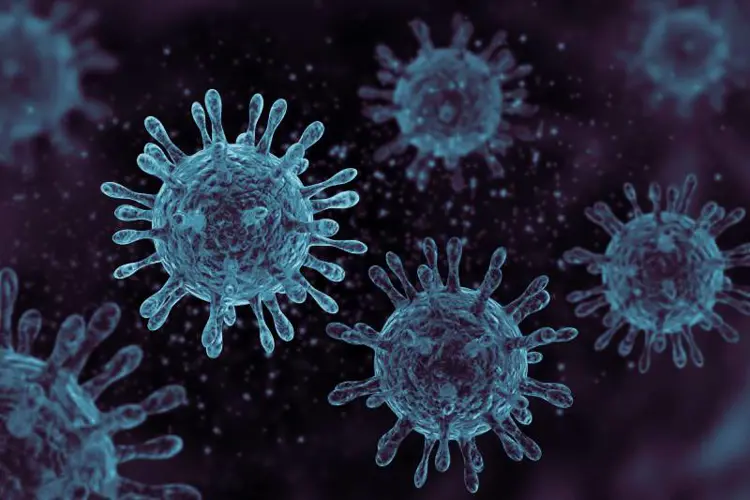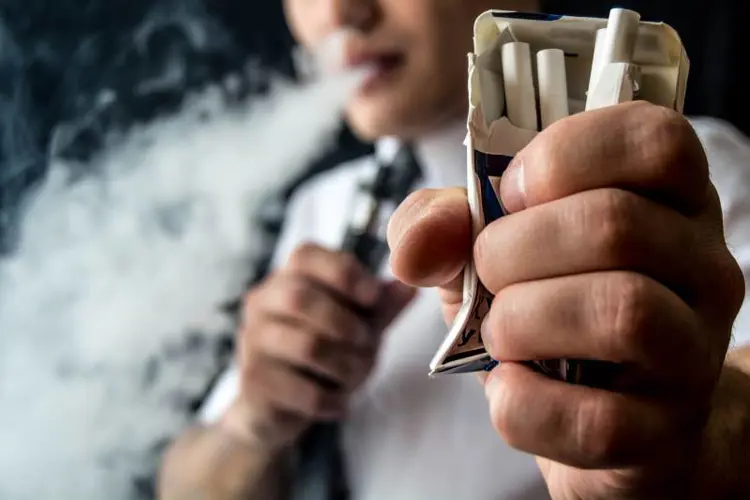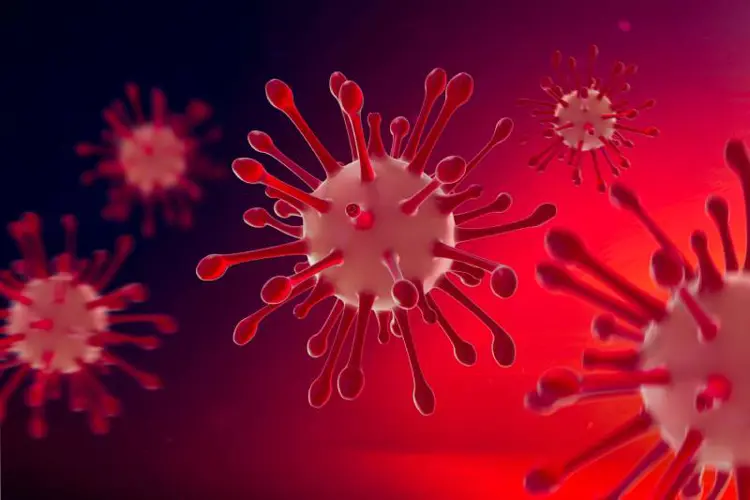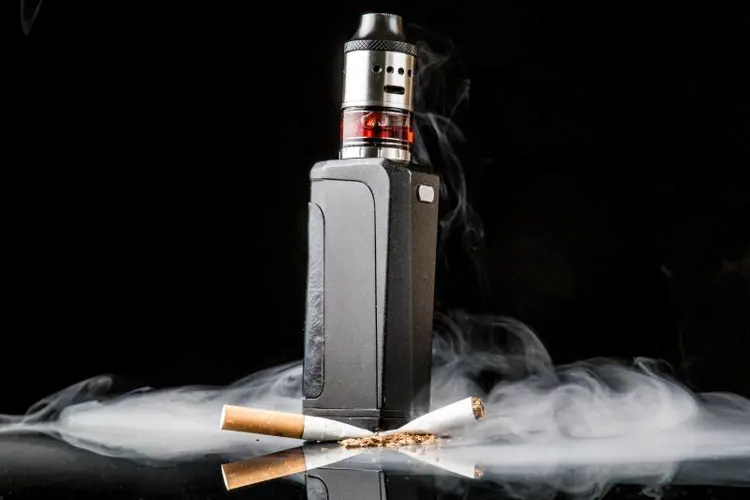Out of all of the health panics that have engulfed vaping over the years, the formaldehyde scare was arguably the biggest and most damaging. After publication of the now-infamous New England Journal of Medicine research letter from scientists at Portland State University, headlines around the world declared vaping to be a bigger cancer risk than smoking. It confused people about the relative risks of vaping, and even drove some vapers back to cigarettes.
The results were quickly panned as unrealistic by vapers and expert observers, who criticized the method and the usual extreme, cherry-picked reporting of the results, but the damage was done.
Now a new paper from Dr. Konstantinos Farsalinos and Gene Gillman has added some weight to the previous criticisms. The systematic review analyzes the evidence from 32 studies on vaping and carbonyl compounds like formaldehyde, acetaldehyde, acrolein and others. The authors focus on the problems with how these studies are conducted, and in particular the issues with the ones that have produced the most headline-friendly results.
The paper is a vindication of everything vapers have complained about: many results don’t represent real-world vaping, and could do a lot of damage to public perceptions of vaping.
Inconsistent methods produce inconsistent results
The 32 studies included in the paper are summarized in detail, including the methods used to produce and analyze the vapor, and their results.
One thing the authors point out is that the methods vary substantially. For example, the length of the puffs used ranges from 1.8 to 8 seconds, and the gap between puffs may be anywhere from 10 to 60 seconds. The volume of the puff also varies massively, from just over 33 mL to about 153 mL.
This presents an immediate issue: how can you compare the results from two-second puffs taken every 30 seconds to those from eight-second puffs with only 10 seconds between each? It’s hard, to say the least, but that’s what the evidence is like. To make matters worse, the results might be represented as per puff, per mL of e-liquid, or per cubic meter of vapor. And this is even before we get onto the issue of the specific devices and settings used.
Unfortunately, only four studies of the 32 actually got vapers involved.
This makes the key question of how much formaldehyde, acetaldehyde, acrolein there is in vapor hard to answer. You can go through the summaries of the individual studies if you like, but the short version is that the results vary a lot.
There is one study worth mentioning, though. Dr. Farsalinos and colleagues replicated the NEJM formaldehyde study last year, using the same outdated CE4 atomizer, the same e-liquid, and the same battery, but this time testing a range of voltages. By including the key step of asking vapers to try out the setup, they found that 4.0 V was the maximum voltage people would use in the real world. At these settings, the result of 20 μg of formaldehyde per 10 puffs (where 0.001 mg = 1 μg) was 36 times lower than the 718 μg per 10 puffs measured at 5.0 V. The original Portland State study detected 380 μg per 10 puffs at 5.0 V.
While direct replications like this and studies with similar methods can offer useful comparisons, the main point of the paper isn’t as much about the results as it is about the methods. Before we can really answer the key questions, we need to consider why the method used matters so much.
Formaldehyde: why do so many researchers get it wrong?
The discussion section of the paper really hammers home what we’ve learned so far from studies of carbonyls like formaldehyde in e-cig vapor. Methodological problems are common, and they usually come down to the same thing: dry puffs.
Most vapers know what dry puffs (or dry hits) are because they happen from time to time, especially when you’re first starting out. If you try to vape but there isn’t enough e-liquid in the wick, the liquid that is present can overheat and this leads to an unpleasant burning taste. There are lots of articles about this on vaping websites, and the authors point out that it was first described in the scientific literature in 2013.
As the replication of the NEJM study showed, vapers readily identify these conditions, and dry puffs are likely to be responsible for the most concerning results for carbonyls in vapor. Many of the issues with how studies are conducted discussed in the Farsalinos review revolve around reducing the risk of dry puffs.
The authors’ primary recommendations for future researchers are:
- The puffing regime. The volumes, puff times, and intervals between puffs vary a lot in the research, but certain combinations can lead to dry puffs. For example, too short an interval doesn’t give the coil time to cool down between puffs, and long puffs make it more difficult for the atomizer’s wick to keep up. The authors recommend 40-70 mL puffs, 2-4 seconds in length, and with 30 seconds between puffs
- Power settings and atomizers. The key issue for most studies on later-generation vaping products is that some researchers seem to think that any setting is fine for any atomizer. As all vapers know, this isn’t the case. A previous Gillman study showed this convincingly by testing five atomizers at different settings, and showed that newer-generation atomizers – with better wicking – produce only very low amounts of carbonyls even at high power settings
- PG/VG ratios and viscosity. The viscosity of the liquid impacts how well it wicks, and problems with wicking can lead to dry puffs. Intuitively, this would mean high-VG e-liquids are more likely to cause issues. There is some evidence to back this up, but the authors note that more research is needed
- Temperature. You’d probably expect the temperature of the coil to be linked to the risk of dry puffs and carbonyls, but it’s not certain, and more research is needed. Two studies looked directly at the temperature during vaping, and found that emissions increased sharply at around 300 and 350 °C (570 and 660 °F), respectively. The other heated e-liquid outside of an e-cigarette and found that levels increased at 150 °C / 300 °F. The authors point out that it’s “currently unclear” if there is a specific temperature associated with the carbonyl increase during realistic use conditions.
Of course, there is one really simple solution to all of these problems: get vapers to test your protocol before conducting a study. Since dry puffs are identified by taste and this is subjective, the only way to get a reliable answer is to involve real-world vapers. Unfortunately, only four studies of the 32 actually got vapers involved.
There are some other issues that need to be addressed, too. One example is flavorings. A study found that carbonyl levels increased a massive 10,000 times in flavored e-liquids compared to unflavored e-liquids, and dry puffs don’t seem to have been the cause. However, this result doesn’t seem reliable, because many flavored e-liquids were tested in the other studies reviewed, without comparable results. The authors argue that study needs to be replicated to confirm or refute the result.
The results for modern atomizers are the most relevant ones for vapers. And the news looks good overall.
Another issue is how results are reported. Saying how much formaldehyde is in a puff seems like a good idea, but that isn’t always the case. Higher power settings produce more vapor per puff, so even if the same percentage of the liquid is converted to carbonyls during vaping, it would lead to bigger amounts in each puff. The authors argue it would be more accurate to report results per mL inhaled or per gram of e-liquid consumed.
Overall, there are many potential issues when testing for formaldehyde and other carbonyls in vapor, and researchers shouldn’t just wade in without considering things carefully. The easy solution – getting a vaper to test your method – should become the norm, rather than the exception.
Should vapers be worried about formaldehyde?
So what does this all mean for vapers? The results for modern atomizers are the most relevant ones for vapers. And the news looks good overall. Formaldehyde and other carbonyl levels are always much lower in vapes than in tobacco cigarettes when these newer devices are used (for example in this study).
The authors point out that breathing the air in an ordinary house will mean you inhale about 1 mg of formaldehyde a day, whereas tests of modern atomizers (using a result from this letter as an example) show that vaping 5 ml of e-liquid per day only adds 0.083 mg to this. They add that, “Such levels of emissions are of questionable clinical significance in terms of health risk.”
In short, the new paper shows that researchers need to think more about their methodologies, but it seems that vapers don’t have much to worry about from formaldehyde after all.
The Freemax REXA PRO and REXA SMART are highly advanced pod vapes, offering seemingly endless features, beautiful touchscreens, and new DUOMAX pods.
The OXVA XLIM Pro 2 DNA is powered by a custom-made Evolv DNA chipset, offering a Replay function and dry hit protection. Read our review to find out more.
The SKE Bar is a 2 mL replaceable pod vape with a 500 mAh battery, a 1.2-ohm mesh coil, and 35 flavors to choose from in 2% nicotine.
Because of declining cigarette sales, state governments in the U.S. and countries around the world are looking to vapor products as a new source of tax revenue.
The legal age to buy e-cigarettes and other vaping products varies around the world. The United States recently changed the legal minimum sales age to 21.
A list of vaping product flavor bans and online sales bans in the United States, and sales and possession bans in other countries.




















